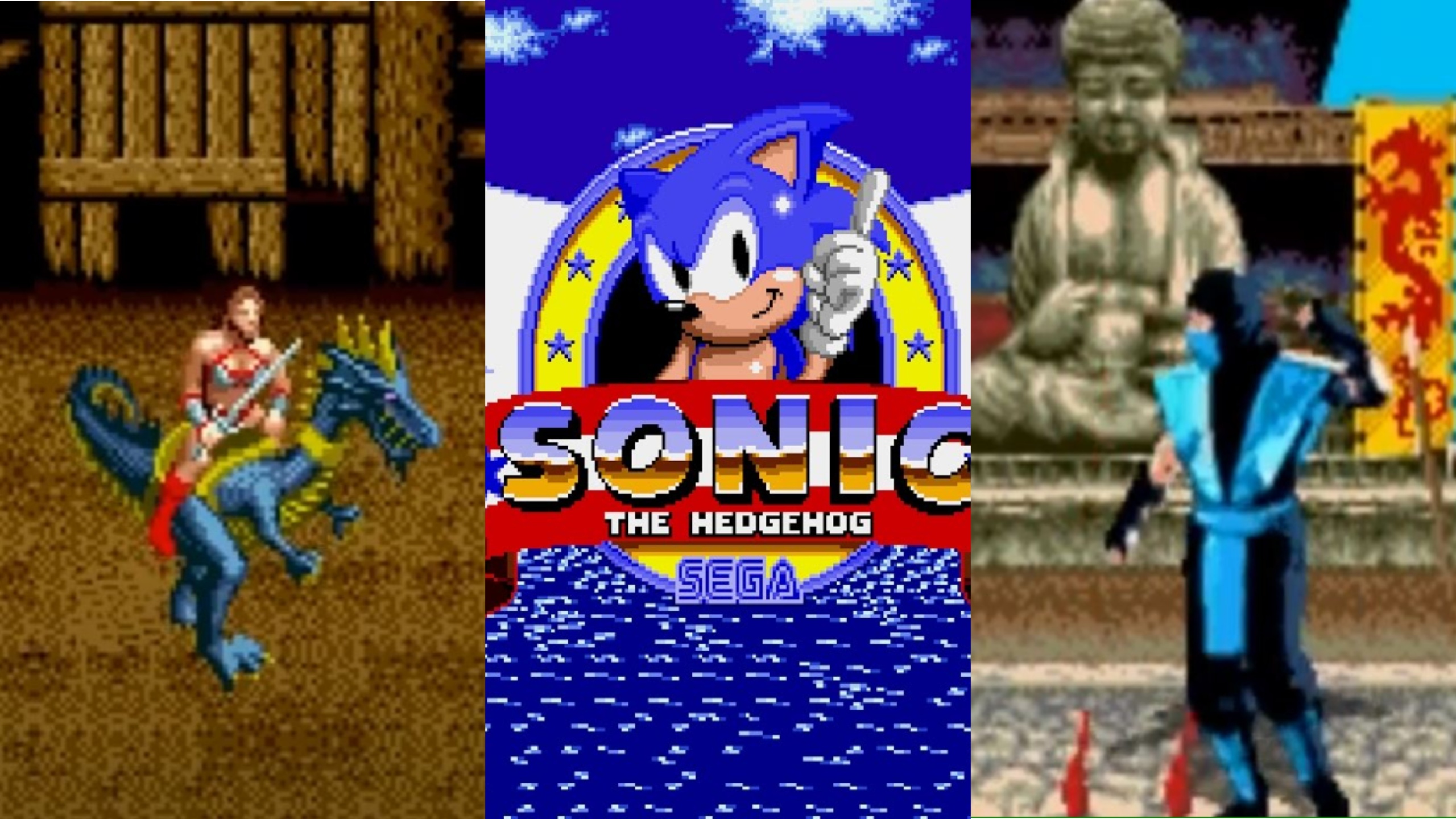
The console wars are not what they used to be. Nowadays, there’s little difference in terms of features and performance between the Xbox Series X and PlayStation 5 (though Nintendo kind of does its own thing with the Switch). There aren’t even many console exclusives anymore as both Sony and Microsoft put most of their titles on PC, and Xbox has begun porting some of their first-party games to other platforms.
But in the ‘90s, things were very different. There were endless debates on playgrounds and early message boards about whether the Sega Genesis or Super Nintendo were the superior console. And the same titles could look and play completely differently depending on your console of choice. But which console really was better? Well, in celebration of the Sega Genesis’ 35th anniversary, here are some things the Genesis just plain did better than the SNES. And if you want a look at how things were on the other side of the battlefield, here is Matthew Byrd’s look at the things the Super Nintendo did better than the Sega Genesis.
Marketing
In the early ‘90s, Nintendo controlled more than 90 percent of the console market by some estimates. Yet, by the middle of the decade, Sega had cut that share down to only 65 percent. The secret was incredibly aggressive marketing. Nintendo had become synonymous with consoles thanks to the NES and its strong library, but after a few years of dominance, Sega executives found that Nintendo really just appealed to younger children. Teens often wouldn’t even admit to owning a Nintendo console.
So, Sega went to work courting these gamers, with the famous “Genesis does what Nintendon’t” campaign. They made Sonic the Hedgehog their “cool” mascot who had a bit of an edge to him. And they claimed the Genesis could perform better due to “blast processing,” which wasn’t really a thing the Genesis could even do, but damn if it didn’t sound awesome. The irony of all this though is that while it helped the Genesis outsell the SNES for four consecutive Christmas seasons in the U.S., Sega’s Japanese headquarters strongly disliked this approach, which only exacerbated the infighting at the company that eventually led Sega to exit the hardware business altogether.
A Better Six-Button Controller
The Genesis launched with a controller that only had three face buttons. It was fine for many early, simple games, but as the library expanded, and in particular added more fighting games like Street Fighter II and Mortal Kombat, three buttons just weren’t going to cut it anymore. The six-button pad easily solved this problem, and it was also really comfortable for extended play sessions (more so than the SNES pad at least).
In fact, the Genesis controller was so good that when it was time to launch its ill-fated successor, the Saturn, Sega really just tweaked the design a little. No, it wasn’t great for 3D games at that point, but it’s still another reason why the Saturn is still so beloved for its arcade ports and library of 2D classics.
Better Sports Games
Many older gamers will champion the SNES because of its superior color palette and sound (plus, the benefit of some fancy in-cartridge chips that came later in the lifecycle). But at the end of the day, the Genesis just had a faster processor, and that made all the difference in football and basketball games that required quickly scrolling down the field or court. Oh, and those extra controller buttons also came in handy here.
This was a golden era for sports fans where games actually did see substantial updates from year to year, and there were no microtransactions to be found. Whether it was Madden, NBA Live, or the legendary NHL ’94, sports games just played better on the Genesis than the SNES, which was one of the biggest reasons the console sold so well in the United States.
Better Fighting Games
The Genesis port of the first Mortal Kombat is infamously considered superior to the SNES version due to its lack of censorship. On the SNES, Nintendo’s emphasis on family-friendly policies at the time required blood in the game to be changed to white sweat, and most fatalities had to be considerably toned down. Unsurprisingly, it sold much worse than the Genesis version since the gore was the game’s biggest selling point.
Beyond that, the fighting genre is another area where the six-button controller truly shined, allowing for a much better experience when playing Street Fighter II (which also featured superior sound over the SNES version). The Genesis even managed to build up a small, but respectable library of exclusive fighters with the likes of Eternal Champions, King of the Monsters 2, and a surprisingly great 32X port of Virtua Fighter.
The Best Shoot ‘em Ups
If there was one genre where the Genesis absolutely dominated the SNES, it was shoot ‘em ups. The library alone still stands up as the greatest on any console, with classics like M.U.S.H.A., Gley Lancer, and Lightening Force: Quest for the Darkstar. If I’m being generous, I’d add Gunstar Heroes and Alien Soldier into the mix, even if they don’t quite meet the classic definition of a shoot ‘em up.
The point is, all of these games hold up incredibly well, and it’s because the Genesis’ faster processor was the perfect match for this style of gameplay, as it excelled in rendering fast scrolling levels and large, animated sprites. Shoot ‘em ups are still among the best-looking titles on the Genesis.
Excellent Arcade Game Ports
Though Nintendo first made a name for itself in the arcades, it had almost entirely turned its focus to console gaming by the late ‘80s. On the other hand, Sega doubled down on its arcade roots, putting out plenty of top-tier coin-op units well into the late ‘90s. That meant the Genesis was built with arcade ports in mind. Right from the get-go, the Genesis had a top-tier library of arcade games like Golden Axe, Alien Storm, and Michael Jackson’s Moonwalker (which is a surprisingly fun game, all controversy aside). If you were a fan of arcade games, Genesis was really the best option, as most third-party arcade games at least came to both consoles.
These arcade ports also gave Sega the opportunity to push the Genesis to its absolute limits. The Genesis version of Virtua Racing shipped with an extra chip that rendered the game in full 3D, and it still stands out as one of the most impressive achievements in programming ever. Then again, Sega also attempted a 2D demake of Virtua Fighter 2 for the Genesis that’s best forgotten, though Sega regularly continues to bundle it in various compilations for some reason.
More Mature Titles
Sega didn’t give developers carte blanche to put anything they wanted in games, but as Mortal Kombat illustrated, the company was much more open to violent and mature content in games than Nintendo was at the start of the 16-bit generation. That meant that Sega was the exclusive home of two games in the horror beat ‘em up series Splatterhouse, and the infamous Sega CD game Night Trap, an FMV game about scantily clad teen girls being attacked by vampires that contributed to the creation of the ESRB.
The irony is that when it came to overtly sexual content, and games featuring religious imagery, Sega actually required a lot of the same edits Nintendo did, but allowing a few gratuitously violent games on the console helped enhance the image among gamers that the Genesis was a console for adults.
Better Versions of Games (Sometimes, At Least)
This advantage admittedly comes with some asterisks, but it happened enough to be worthy of inclusion. In the ‘90s, because the Genesis and the SNES had such drastically different architectures, it wasn’t uncommon for developers to just make two different games for each console while using the same name instead of trying to achieve parity.
Among the most notable beneficiaries of this policy were Disney’s Aladdin, which featured actual sword-based combat and much smoother animation not seen in the SNES version, and Jurassic Park, which let you play as a raptor for certation levels, while SNES players were stuck as humans for the entire game. Then there’s Shadowrun, one of the very best RPGs on the Genesis. Meanwhile, the SNES version is a completely different game that’s nowhere near as good
Forward-Thinking Innovation
Looking back at the Genesis now, it’s easy to see the beginnings of many modern console trends. In 1994, the company launched Sega Channel: a service that let gamers access up to 50 Genesis games through a cable provider for around $15 a month. It was essentially the precursor to Game Pass and downloadable gaming. And while Nintendo offered a similar service, Satallaview, that never came stateside.
Then there were the add-ons, the Sega CD and the 32X. While ultimately divisive peripherals that never sold well, they were both attempts at boosting the power of an aging console without forcing gamers to upgrade to a next-generation machine. That’s something Sony and Microsoft would later pursue with console like the PS4 Pro and the Xbox One X. Then there was the Sega Nomad: an official, full-on portable Genesis that Sega hoped would give the console a second life as it transitioned to supporting the Saturn. It didn’t work out, but Nintendo would later find massive success merging their portable and home console businesses into one unit with the Switch. It’s really interesting to think about where Sega would be in the video game business now if it had just gotten the timing and execution right on these ideas.
Better Partnerships with Publishers and Developers
Because Nintendo was so dominant in the video game industry in the late ‘80s and early ‘90s, the company had immense power to not only dictate the content of games on its consoles but also determine how many games a publisher could release in a given year. From the start, Sega was more open to new, more mature titles on its console, but it was also more flexible about other things as well.
It did take EA reverse engineering the Genesis, but that ultimately led to getting much better publishing terms out of Sega. That in turn led to the release of some of the very best titles on the console. Couple that with Sega being much more accessible to the gaming media than Nintendo, and it’s easy to see why the Genesis was able to become such a massive success even though Nintendo had a huge head start in the marketplace.
The post 10 Reasons Why Sega Genesis Was Better Than Super Nintendo appeared first on Den of Geek.









